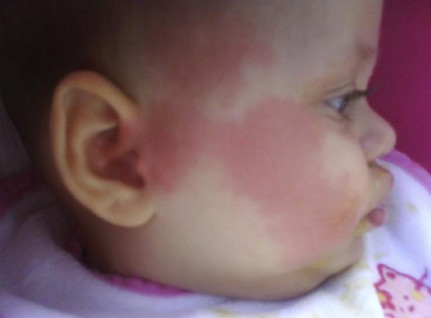(auriculotemporal syndrome)
Rare, probably frequently non-diagnosed. Dysfunction of the auriculotemporal nerve, originating from the mandibular branch of the trigeminal nerve. Clinical presentation: vasodilation and skin heat flush in any part of the facial territory of the auriculotemporal nerve, accompanied by sweating in about 10% cases. These outbursts, which only last a few minutes, are raised at the start of a meal, mostly if it is acidic or spicy foods or whether it necessitates chewing.
In adults, this condition is often encountered in the months following parotid surgery or after local trauma. The cause is unknown: the more often retained hypothesis is that of a local nervous trauma leading to an uncontrolled regeneration of autonomic fibers ( sympathetic and vagal fibers connections), which explains that the phenomenon extends sometimes beyond the cutaneous territory of the auriculotemporal nerve while remaining in the territory of the nerve V.
The infantile form appears generally around the age of 5 months, at the start of the dietary diversification, which explains that cases are confused with a food allergy.
Two forms:
- unilateral form, which most often concerns the cheek and pretragal region; a history of difficult childbirth (vacuum or forceps) with a sequel in the same area of the face is often found at birth
- bilateral form, which most often comprises the temporal areas.
The regression is generally spontaneous in a few months, especially in unilateral forms.

Anesthetic implications:
none
References :
- Blanc S, Bourrier T, Boralevi F, Sabouraud-Leclerc D et al.
Frey syndrome.
J Pediatr 2016 ; 174 : 211-3.
- Smith A, Jonas N.
Frey’s syndrome.
N Engl J Med 2020 ; 382 :1456
Updated: April 2020